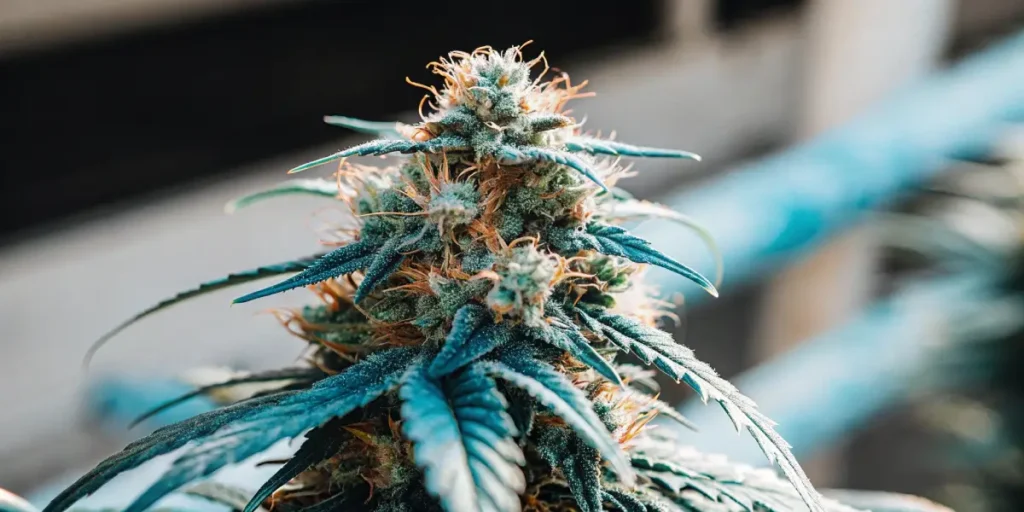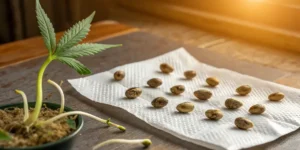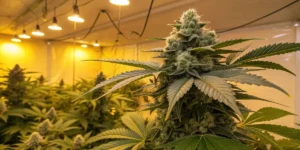Strawberry Lemonade is a delightful cannabis strain known for its invigorating flavors and balanced effects. Developed by crossing Strawberry Cough and Lemon OG, this sativa-dominant hybrid offers a unique growing experience. To cultivate Strawberry Lemonade successfully, it’s important to understand its preferences for growing conditions and care. By providing the ideal environment and adhering to specific growing practices, you can enjoy a fruitful harvest full of potent, flavorful buds.
The first step in growing Strawberry Lemonade is selecting the optimal growing medium and location. This strain thrives in both soil and hydroponic systems, but a well-aerated soil rich in organic matter often brings out the best flavors and potency. Whether you’re growing indoors or outdoors, ensure that your plants receive ample sunlight. Indoor growers should maintain a 18-6 light cycle during the vegetative stage. Maintaining a consistent growing environment with temperatures between 68-80°F (20-27°C) and humidity levels around 40-50% is crucial for vigorous growth.
Next, focus on feeding and water management. Strawberry Lemonade is a relatively nutrient-hungry strain, so regular feeding with a balanced fertilizer during the vegetative stage is essential. As it transitions into the flowering phase, which typically takes 8-10 weeks, switch to a bloom-focused nutrient solution. Be cautious not to overwater, as root rot can hamper plant health. Ensure that your chosen containers have good drainage and water only when the top inch of soil feels dry to the touch.
Training techniques such as topping and low-stress training (LST) are effective for maximizing yield. By manipulating plant growth patterns, you can increase light exposure to budding sites and manage the plant’s shape. Regularly prune excess foliage to improve airflow and light penetration, helping to prevent mold and pests. During the flowering stage, monitor plants closely for signs of nutrient deficiencies or pest infestations, and take corrective actions promptly.
Finally, timing the harvest correctly enhances the quality of your yield. Observe the trichomes on your Strawberry Lemonade plants, using a magnifying glass to see when they turn milky with some amber hues. This indicates peak potency. After harvesting, curing the buds properly is critical. Dry the buds in a dark, well-ventilated area, and then place them in airtight jars, burping them daily for the first week to maintain optimal humidity and flavor.
Strawberry lemonade Strain Overview: Traits, Effects & Genetics
Strawberry Lemonade is a remarkable hybrid cannabis strain renowned for its invigorating flavor profile and balanced effects. A cross between Strawberry Cough and Lemon OG, this strain delivers a sweet and citrusy zest, coupled with a subtle earthy undertone. The visual appeal of Strawberry Lemonade is equally delightful, featuring dense buds coated in a generous layer of trichomes that shimmer beneath light. Its bright green foliage with bursts of orange pistils makes it a feast for the eyes, highlighting its exquisite genetic lineage.
One of the defining traits of Strawberry Lemonade is its potent effects, catering to both recreational and medicinal users. With a THC content that often ranges between 18% to as high as 22%, it provides a powerful uplifting and euphoric sensation. Users typically experience a surge of creativity and energy upon consumption, making it an ideal choice for daytime use or artistic endeavors. Despite its invigorating onset, Strawberry Lemonade also brings a mellow relaxation that helps in unwinding after a busy day, offering a soothing balance without inducing excessive sedation.
The genetics of Strawberry Lemonade are what give it such an exceptional profile. It retains the best features of its parent strains; from the sweet, berry-laden essence of Strawberry Cough, known for its positive cerebral effects, to the lemony zest and calming influence of Lemon OG. This harmonious blend ensures that users enjoy a well-rounded experience. Strawberry Lemonade also shines in its resilience and productivity, making it a popular choice among growers seeking a strain that is both rewarding and robust. Its vigorous growth and high yield make it an attractive option for both novice and experienced cultivators.
Optimal Environment to Grow Strawberry Lemonade Successfully
The “Strawberry Lemonade” cannabis strain is renowned for its sweet, citrusy aroma and enticing flavor profile, making it a favored choice among cultivators. To cultivate Strawberry Lemonade successfully, you must pay close attention to its environmental needs. An optimal growing environment will not only promote healthy plant growth but also enhance the plant’s unique flavor characteristics. Generally, this strain can be grown both indoors and outdoors; however, specific conditions must be tailored to maximize yield and potency.
Indoor cultivation of Strawberry Lemonade requires stringent control over the climate to reproduce its ideal growing conditions. The strain thrives in temperatures ranging from 70°F to 85°F (21°C to 29°C). Consistent temperature control is crucial to avoid stress that could stunt growth or reduce quality. Besides to temperature, maintaining a humidity level between 40% and 50% during the vegetative stage is essential for optimal growth. As the plants transition to the flowering stage, gradually reducing humidity to around 30%-40% helps prevent mold and mildew, which the dense buds of Strawberry Lemonade are particularly susceptible to.
Outdoor growers must select a location that provides ample sunlight, as Strawberry Lemonade requires plenty of direct sunlight to flourish. Growing outdoors in a warm, Mediterranean-like climate is ideal. This strain typically thrives in environments where summer temperatures are consistent and the threat of frost is minimal. Soil quality also plays a crucial role; a nutrient-rich, well-draining soil will provide the best results. If growing in less hospitable climates, consider using greenhouses to simulate the appropriate conditions and extend the growing season.
Ventilation is another critical factor in both indoor and outdoor environments. Adequate airflow helps regulate temperature and humidity, reduces the risk of pest infestations, and strengthens the plant’s structure by promoting a more robust stem system. For indoor setups, consider using oscillating fans and a robust exhaust system to keep air circulating. Outdoor plants benefit from natural breezes, but spacing the plants appropriately also ensures good airflow between them.
Ultimately growing Strawberry Lemonade requires attention to detail regarding temperature, humidity, light exposure, soil quality, and ventilation. By optimizing these environmental conditions, cultivators can enhance the strain’s growth potential and ensure a bountiful harvest marked by the distinctive flavor and aroma that Strawberry Lemonade is famous for.
Grow Room Setup for Strawberry Lemonade Plants
Setting up a dedicated grow room for your Strawberry Lemonade cannabis plants is crucial to ensure optimal growth and a bountiful harvest. The first step is to choose an appropriate space that can accommodate your plants while allowing for proper air circulation. A well-ventilated room helps maintain the ideal conditions for cannabis cultivation. Ensure the grow room is light-proof to prevent any light leaks. Unwanted light can interfere with the plants’ light cycles, which can stress the plants and reduce their yield potential.
Once the space is secured, the next critical component of the setup is the lighting. Strawberry Lemonade plants, like other cannabis varieties, require ample light for photosynthesis and growth. LED grow lights are highly recommended as they offer a full spectrum of light and are energy efficient. Set your lights on a timer to mimic the natural day and night cycles. During the vegetative stage, your plants will need approximately 18-20 hours of light per day, while the flowering stage requires around 12 hours of light and 12 hours of darkness.
Temperature and humidity control are essential factors to consider in your grow room setup. Strawberry Lemonade plants thrive in temperatures ranging from 70°F to 85°F (21°C to 29°C) during the day and slightly cooler at night. Humidity should be maintained at around 40-60% during the vegetative stage and lowered to 30-40% during the flowering stage to prevent mold and mildew. Consider investing in a hygrometer and thermostat to monitor these conditions accurately.
Besides to lighting and climate control, adequate air circulation is vital for Strawberry Lemonade plants. Proper air movement helps strengthen the plants’ stems and aids in preventing mold growth. Installing oscillating fans in your grow room will ensure that fresh air is distributed evenly across your plants, enhancing their overall health. A carbon filter can also be a valuable addition, as it helps remove odors and cleans the air within the grow space.
Finally, consider the type of growing medium and containers you will use. Strawberry Lemonade plants adapt well to soil, coco coir, or hydroponic systems. Each medium requires different care and nutrient solutions, so choose one that fits your experience level and preference. Ensure the containers offer good drainage to prevent overwatering, which can lead to root rot and other issues. With the right setup, your Strawberry Lemonade plants will flourish, providing you with a hearty and flavorful yield.
Indoor Growing Tips
Growing Strawberry Lemonade indoors can be a rewarding experience, blending the unique flavors and potent effects for which this strain is known. To begin, select a high-quality LED grow light, as it is crucial to mimic the sun’s natural daylight cycle effectively. The Strawberry Lemonade strain flourishes under a full spectrum light, encouraging robust growth and improving the overall yield and potency of the buds. Regularly adjusting the light spectrum based on the plant’s growth stages will optimize results, providing blue light during the vegetative stage and red hues during flowering.
Temperature and humidity control are essential factors when growing Strawberry Lemonade indoors. Aim to maintain a temperature range between 70-85°F (21-29°C) during the day and slightly cooler at night. Keeping the humidity levels around 40-50% during the vegetative phase and reducing it to 30-40% during flowering prevents mold and mildew while promoting resin production. Using a hygrometer and a thermometer can help ensure these environmental conditions are consistently met for optimal plant health.
Another critical aspect of growing Strawberry Lemonade indoors is maintaining an appropriate nutrient regime. This strain is relatively forgiving, but feeding it a balanced nutrient schedule is vital for achieving high yields. Utilize high-quality nutrients tailored for cannabis, focusing on nitrogen-rich feeds during the vegetative stage and incorporating phosphorus and potassium as the plant transitions to flowering. Regularly monitor pH levels of the soil or growing medium, aiming for a range between 6.0-6.5, to promote maximum nutrient absorption and prevent nutrient lockout.
Lastly, regular pruning and training techniques such as topping, fimming, or using the Screen of Green (ScrOG) method will help enhance the yield of Strawberry Lemonade. These techniques encourage the plant to develop multiple main colas and improve light penetration to lower branches, stimulating overall growth. Additionally, providing adequate airflow with oscillating fans will reduce the risk of pests and diseases while helping strengthen the plant’s structure, ensuring a bountiful indoor harvest of Strawberry Lemonade.
Outdoor Growing Tips
Strawberry Lemonade, an indica-dominant hybrid known for its refreshing citrus and berry flavors, requires careful outdoor cultivation to fully realize its potential. Selecting the right planting site is crucial; this strain thrives in a location with abundant sunlight and good airflow. Keep in mind the climate of your region, as Strawberry Lemonade flourishes in environments with warm days and cooler nights. Ensure soil is rich, well-draining, and amended with organic matter to promote healthy root development and overall plant vigor.
Water management is another key factor when growing Strawberry Lemonade outdoors. This strain requires consistent moisture to avoid stress, but it’s imperative to prevent water logging, which can lead to root rot and other diseases. Establish a watering schedule that maintains soil moisture without oversaturation, taking into account rainfall and natural humidity levels. Mulching around the base can help retain soil moisture and regulate temperature, reducing evaporation during hot spells.
Pest and disease control is essential when nurturing Strawberry Lemonade in an outdoor setting. Regularly inspect plants for signs of common pests, such as aphids and spider mites, as well as mold and mildew, which can occur in humid conditions. Employ organic pest control methods, such as neem oil or insecticidal soap, to safeguard your plants without introducing harmful chemicals into your gardening environment. Companion planting with pest-repelling herbs like mint and basil can also create a natural deterrent.
To enhance the natural terpene profile, providing support systems like stakes or trellises can help manage plant growth and maximize yield. Regular pruning ensures adequate light penetration and airflow through the canopy, discouraging mold while promoting fuller, more robust buds. Harvesting typically occurs in late September to early October, depending on local climate; use magnification to check trichome maturity to guide your harvest timing. By following these outdoor growing tips, cultivators can achieve an impressive and fragrant Strawberry Lemonade crop.
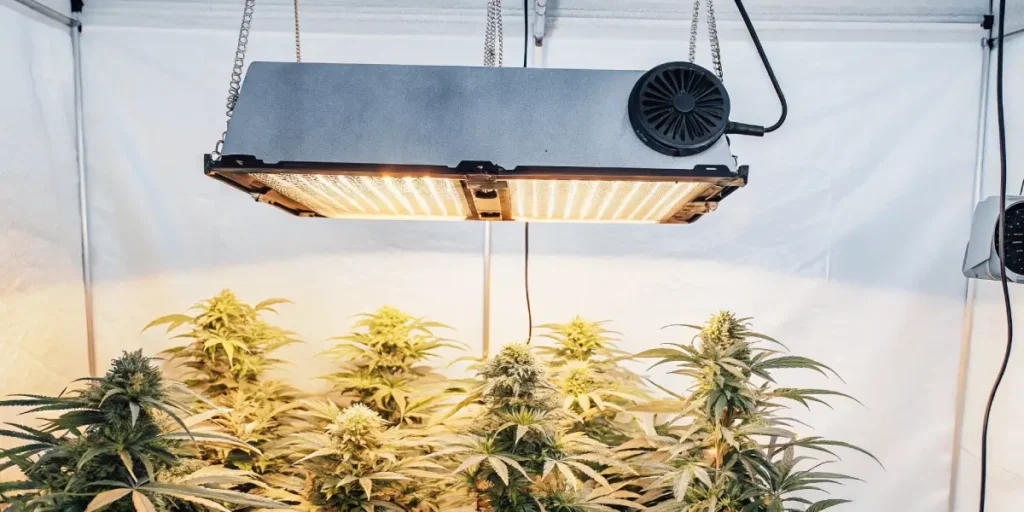
How to Germinate & Propagate Strawberry Lemonade
Germinating Strawberry Lemonade seeds, a hybrid strain renowned for its sweet, citrusy aroma, is the first crucial step in successful cannabis cultivation. To begin the process, consider using the paper towel method, a tried and tested approach favored by many growers for its simplicity and efficacy. Start by moistening two paper towels with distilled water, ensuring they are damp but not overly saturated. Place the Strawberry Lemonade seeds between the towels, then set them in a warm, dark area, ideally where the temperature remains consistent between 70-85°F (21-29°C). Within a few days, you should observe the seeds cracking open and tiny, white taproots emerging, a sign that the seeds are ready for planting.
Once germinated, the next step is to propagate the seedlings. Choose a quality soil or soilless medium with excellent drainage to provide the young plants with the best start. Carefully transfer the germinated seeds to small pots, burying them about half an inch deep with the taproot facing downward. Place your pots in a controlled environment with ample light, ideally using fluorescent or LED grow lights. Ensure the growing space maintains a stable temperature and humidity level, typically around 70-75°F (21-24°C) and 60-70% humidity during the seedling stage. Water the soil gently to keep it moist but avoid overwatering, which can lead to root rot and other issues.
As the Strawberry Lemonade plants continue to grow, giving them the proper care and attention is essential for healthy propagation and robust yields. Gradually increase the light exposure as the seedlings develop, and once they have several sets of leaves, consider transferring them to larger pots to accommodate their expanding root systems. At this stage, it’s crucial to introduce a balanced nutrient regimen that supports both vegetative growth and future flowering. Regularly monitor the plants for signs of stress, pests, or nutritional deficiencies, and adjust your care routine as needed. By following these steps, you can successfully germinate and propagate Strawberry Lemonade plants, setting the foundation for a bountiful and rewarding harvest.
Vegetative Stage: Nurturing Your Strawberry Lemonade Plants
The vegetative stage of growing Strawberry Lemonade cannabis is a crucial period where your plants develop the structure and foliage necessary for a bountiful flowering phase. During this stage, your focus should be on promoting healthy growth and maintaining optimum conditions to maximize the plant’s potential. Ensuring a stable environment with appropriate lighting, humidity, and nutrients will help your Strawberry Lemonade plants flourish. Adjusting your growth strategies based on the plant’s response will lead to more vigorous growth and a solid foundation for the ensuing stages.
Lighting is a pivotal component in the vegetative stage, providing the energy necessary for photosynthesis and robust growth. For Strawberry Lemonade plants, a light cycle of 18 to 24 hours of exposure per day is standard, using LED or fluorescent lights of suitable intensity. These light sources are efficient and contribute minimal heat, which is beneficial in preventing stress on the plants. Position the lights at a distance that encourages growth while ensuring they don’t burn the foliage. Monitor the plants and adjust the distance as they grow taller to maintain ideal light exposure across the canopy.
Balanced nutrition is key to strong vegetative growth in Strawberry Lemonade plants. During this stage, the plants require a nutrient solution higher in nitrogen to support the development of stems and leaves. Utilize a suitable cannabis-specific fertilizer to provide the necessary macro and micronutrients, and incorporate regular checks to prevent overfeeding or nutrient deficiencies. Water your plants consistently, ensuring the soil medium remains appropriately moist – not waterlogged. Maintaining an optimal pH level between 6.0 and 7.0 encourages nutrient uptake, reducing the risk of nutrient lockout.
Ensuring proper airflow and maintaining ideal humidity levels are essential for nurturing healthy Strawberry Lemonade plants. Good air circulation prevents mold and fungal growth, which can be detrimental to plant health. Installing fans to circulate air and maintaining a humidity level around 60% during the vegetative stage helps the plants to transpire effectively. As the plants mature, gradually reduce humidity levels to encourage the plant’s natural resistance and fortify its structure. Keeping an eye on environmental conditions and making timely adjustments ensures a stable atmosphere conducive to robust vegetative growth.
Training techniques such as topping, pruning, and low-stress training (LST) can be initiated during the vegetative stage to shape the structure of your Strawberry Lemonade plants. These methods promote an even canopy and improve light penetration to lower branches, potentially increasing your yield during flowering. Implement these techniques with care, allowing enough recovery time to avoid stress and ensure optimal plant health. By proactively managing the vegetative stage through environmental controls, nutrition, and strategic training, you’re setting the stage for your Strawberry Lemonade plants to reach their maximum potential come flowering.
Flowering: What to Expect
Strawberry Lemonade is a delightful cannabis strain known for its potent and sweet aroma. As you approach the flowering stage, this strain exhibits some unique characteristics that growers should be prepared for. During the early flowering phase, which typically begins around the seventh to ninth week of its growth cycle, you can expect to see the plant begin developing dense clusters of buds. Cultivators will notice the classic sativa traits with elongated buds and a sprawling structure, accentuating the need for adequate space and proper support structures.
The aroma during the flowering stage can be quite pungent, giving off a blend of sweet strawberry and citrus notes reminiscent of fresh lemonade. This scent not only pleases the senses but also indicates a flourishing plant. It’s essential to ensure proper ventilation in your grow space to manage humidity and prevent mold and mildew, as these plants can produce a significant amount of resin. The high trichome production on the buds is a promising sign for those looking forward to a bountiful and potent harvest.
Nutrient management is crucial during Strawberry Lemonade’s flowering phase. This strain prefers a balanced diet rich in organic nutrients. Pay close attention to the levels of phosphorus and potassium, as these elements are crucial for robust bud development. Regular monitoring of pH levels in the growing medium will ensure the plant can efficiently absorb the necessary minerals. Implementing a regiment of regular watering and feeding according to the plant’s specific needs will result in the optimal expression of this strain’s characteristics.
As the flowering stage progresses, anticipate a vibrant display of color with hues ranging from deep green to light pinks and purples. Over the weeks leading to the harvest, trichomes will become increasingly prominent, developing a frosty appearance that adds to the aesthetic appeal of this beautiful plant. This stage typically lasts between eight and ten weeks, varying on growing conditions and phenotype specifics. Growers should observe the trichomes closely for the milky color and slight amber tinge signaling peak potency, indicating the best time to harvest for the most rewarding yield.
Fertilizers & Nutrient Schedule
The success of growing Strawberry Lemonade cannabis relies heavily on how well you manage its nutrient intake throughout its life cycle. This variety, celebrated for its sweet, citrusy aroma and potent effects, demands a well-balanced diet. During the vegetative stage, an ample supply of nitrogen is crucial. Nitrogen fosters vigorous growth, promoting lush foliage and a robust framework that supports ample bud production in the flowering phase. A high-quality vegetative-stage fertilizer with an N-P-K ratio of approximately 3-1-2 is recommended to maintain health and vigor during this period.
As Strawberry Lemonade transitions into the flowering stage, its nutritional needs change significantly. At this point, a reduction in nitrogen and an increase in phosphorus and potassium become essential. These nutrients support flower development and improve the plant’s ability to produce aromatic terpenes and potent cannabinoids. A flowering fertilizer with an N-P-K ratio of around 1-3-2 can optimize the bloom phase performance, ensuring the buds develop density and potency while retaining their fruity fragrance.
Establishing a consistent nutrient schedule is paramount in cultivating Strawberry Lemonade. Begin by feeding nutrients every other watering, allowing the soil to dry sufficiently in between to prevent root rot. During the first few weeks of the vegetative stage, introduce nutrients at half the recommended strength, progressively increasing to full strength as the plants exhibit healthy growth. As flowering begins, gradually transition to a flowering-specific nutrient mix, adjusting concentrations based on plant response and environmental conditions.
Monitoring the pH level of your feeding solution is another crucial aspect of nourishing Strawberry Lemonade. The ideal pH range for nutrient uptake in soil is between 6.0 and 7.0. Deviations can cause nutrient lockout, leading to deficiencies that hinder growth and diminish final yields. Regularly testing and adjusting pH levels can safeguard your plants against such issues, promoting optimal health throughout their lifecycle.
Alongside macro-nutrients, micro-nutrients play a significant role in Strawberry Lemonade’s development. Calcium and magnesium supplements are often necessary, especially if using reverse osmosis water or growing in soil-less mediums like coco coir. Incorporating these elements can prevent deficiencies that typically manifest as yellowing leaves or stunted growth. Always observe your plants closely, as their appearance will guide you on whether to adjust the nutrient regime to meet their specific needs.
Pest and Disease Prevention for Healthy Cannabis Plants
Growing Strawberry Lemonade cannabis requires a meticulous approach to pest and disease prevention to ensure robust plant health. Strawberry Lemonade, known for its vibrant flavor profile and aromatic bouquet, can be particularly susceptible to various pests and diseases if not properly managed. Integrated Pest Management (IPM) techniques are essential for cultivating healthy plants and minimizing the risk of infestations and infections. In this section, we’ll discuss several strategies critical to maintaining the vitality of your Strawberry Lemonade crop.
Firstly, maintaining a clean growing environment is crucial. Sterilizing tools, pots, and cultivation areas can significantly reduce the likelihood of pest and disease problems. Regularly remove dead leaves and plant debris to eliminate potential hiding spots for pests and fungal spores. Employing companion planting, such as incorporating plants like marigolds or basil nearby, can also serve as a natural deterrent against common insects, enhancing the biodiversity and health of your growing ecosystem.
Secondly, monitoring for pests such as spider mites, aphids, and whiteflies is essential. Regularly inspect the undersides of leaves where these pests commonly hide. Employ a magnifying glass to detect even the smallest intruders. Early detection allows for prompt intervention before pests establish a foothold. Neem oil and insecticidal soaps are effective organic treatments that can be employed to manage minor infestations without harming your Strawberry Lemonade plants.
Moreover, ensuring proper ventilation and humidity control can prevent diseases like powdery mildew and bud rot that thrive in stagnant, moist environments. Aim for humidity levels between 40% and 60% and provide consistent airflow using oscillating fans to strengthen the plants and reduce disease prevalence. Additionally, keep an eye on soil moisture levels to prevent root rot, ensuring that irrigation practices do not over-saturate the soil.
Lastly, regular soil testing and balanced nutrient applications are vital for plant resilience. Healthy, well-nourished plants are more resistant to both pests and diseases. Utilize organic fertilizers and amendments to maintain soil health, and consider the use of beneficial insects such as ladybugs and predatory mites that naturally manage pest populations. By incorporating these strategies, growers can cultivate flourishing Strawberry Lemonade cannabis plants, maximizing both yield and quality.
Harvesting & Drying Strawberry Lemonade the Right Way
Harvesting Strawberry Lemonade cannabis at the optimal time is crucial to ensure that you maximize the strain’s flavor and potency. Generally, you want to harvest the plants when the trichomes, which are tiny resin glands on the buds, turn from clear to milky white and amber. This change indicates that the cannabinoids, such as THC, have reached their peak potency. Monitor the pistils on the buds as well; they should be around 70% brown. Make sure to use sterilized pruning shears to cut the branches, minimizing damage and reducing the risk of infection.
Once harvested, the Strawberry Lemonade branches need to be cured properly to preserve their unique flavor profile and potency. Begin by trimming away any excess leaves to improve air circulation around the buds. The drying process should be conducted in a dark room with a temperature of around 60-70°F (15-21°C) and humidity levels between 45-55%. Proper air circulation is also essential, so consider using fans to maintain airflow, but ensure they don’t blow directly onto the hanging buds to avoid overdrying.
Drying typically takes 7-10 days, depending on the environmental conditions. A good indicator of readiness is when the small branches snap, rather than bend, when bent. Once dry, carefully remove the buds and transfer them to glass jars for curing. During the first week of curing, open the jars for about 15-30 minutes daily to release moisture and allow fresh air in. This step is vital as it enhances the final aroma and taste while significantly improving the smoothness of the smoke.
Remember, patience is key during the curing process. Ideally, the Strawberry Lemonade buds should cure for at least 2-4 weeks, with some enthusiasts recommending up to 8 weeks to unlock the full potential of the terpenes and flavors. Properly harvesting and drying Strawberry Lemonade not only ensures a smooth and delightful consumption experience but also preserves its delicious, fruity profile, living up to its name.
Strawberry lemonade Strain Type: Indica, Sativa or Hybrid?
The Strawberry Lemonade strain is an intriguing and stimulating cannabis strain that falls under the hybrid category, blending characteristics of both Indica and Sativa strains. Renowned among cannabis enthusiasts, Strawberry Lemonade is a hybrid that is predominantly Sativa-dominant. It brings together the best elements of its parent strains to offer a well-rounded experience that appeals to a wide array of consumer needs, whether medicinal or recreational. This strain is the offspring of Strawberry Cough and Lemon OG Kush, combining their strengths into a powerful and unique hybrid.
As a Sativa-dominant hybrid, Strawberry Lemonade typically possesses an invigorating and uplifting effect that can increase energy levels and promote creativity, making it an ideal choice for daytime use. Many consumers report that it elevates mood and enhances focus, which is beneficial for staying motivated and completing creative projects. The Sativa elements in this strain help users experience a clear-headed high, which is preferable during activities requiring concentration and interaction. Despite its Sativa dominance, this hybrid strain still retains some calming qualities of Indica, which can help moderate the energetic effects.
Although Strawberry Lemonade leans towards a Sativa profile, it holds just enough Indica presence to balance its effects, thus preventing any overwhelming sensations of anxiety that can occasionally accompany Sativa strains. This element of its hybrid nature means that while it is energizing, the strain still provides a subtle body relaxation. This makes it versatile for users who may need therapeutic effects for managing pain or stress without the couch-lock experience often associated with pure Indica strains. In summary, Strawberry Lemonade’s hybrid nature makes it a favored choice for users seeking an energizing yet balanced cannabis experience.
Why Grow Strawberry Lemonade? Key Benefits for Cultivators
Strawberry Lemonade is a popular choice among cannabis cultivators due to its unique blend of appealing traits. First and foremost, its genetic profile, a balanced hybrid resulting from the cross between Strawberry Cough and Lemon OG, ensures a harmonious blend of uplifting sativa and relaxing indica effects. This makes it an attractive proposition for both recreational consumers looking for a balanced high and medical patients seeking symptomatic relief. The strain’s distinctive sweet and tangy flavor profile, reminiscent of its namesake beverage, further enhances its desirability in the market.
Further adding to its appeal is its robust growth characteristics, making it a relatively easy strain to cultivate even for those with less experience. Strawberry Lemonade plants tend to exhibit high resilience against common pests and diseases, reducing the need for extensive pest control measures which can add to cultivation costs and complexity. In optimal conditions, growers can expect a generous yield, with dense, resin-coated buds that are visually appealing. This higher yield potential combined with quality output offers cultivators an appealing return on investment.
The adaptability of Strawberry Lemonade to different growing environments makes it a versatile option for various cultivation setups. It performs well in both indoor and outdoor setups, and can particularly thrive in controlled climate greenhouses where conditions can be optimized for maximum yield and potency. Its adaptability extends to various pruning techniques, such as topping and training, which can maximize space and light exposure, essential factors in increasing bud production. Such flexibility in cultivation methods provides growers with the opportunity to tailor their approach based on available resources and environmental constraints.
Lastly, the market demand for unique and flavorful strains gives Strawberry Lemonade a competitive edge. As the cannabis consumer base increasingly appreciates distinct flavor profiles and a balanced psychoactive experience, strains like Strawberry Lemonade cater to these preferences, ensuring that cultivators meet market trends. Its popularity is not just rooted in its effects and flavor but also in its visual appeal—striking, frosted buds coupled with a rich aroma that is sure to entice consumers. For cultivators looking to distinguish themselves in a competitive market, Strawberry Lemonade presents an excellent opportunity to capitalize on these growing trends.
Potential Challenges When Growing Strawberry Lemonade
Growing Strawberry Lemonade, a popular cannabis strain known for its delightful aroma and sweet flavors, can be a rewarding endeavor for cultivators. However, like any cannabis strain, it presents specific challenges that growers must navigate to ensure a successful harvest. The first challenge encountered often involves achieving and maintaining the optimal environmental conditions necessary for this strain. Strawberry Lemonade thrives in a warm and stable climate, and fluctuations in temperature or humidity can disrupt the plant’s growth or yield. Indoor growers must particularly focus on setting up precise climate control mechanisms, while outdoor growers need to be mindful of weather patterns and local climatic conditions.
Another significant challenge is managing the nutrient regimen for Strawberry Lemonade. This strain requires a balanced nutrient profile to support its vigorous growth and high yield potential. Over-fertilization can lead to nutrient burn, while underfeeding may stunt plant development. Achieving the right balance often requires experience and close attention to the plant’s responses to feeding. Testing the soil or growing medium regularly and adjusting the nutrient solution based on the plants’ growth stage can mitigate this challenge. Additionally, pH levels should be monitored closely, as fluctuations can lead to nutrient lockout, hindering the plant’s ability to absorb essential elements.
Pest and disease management also pose a potential challenge for growers of Strawberry Lemonade. This strain is susceptible to common cannabis pests such as spider mites, aphids, and fungal diseases like powdery mildew. Effective integrated pest management (IPM) strategies are vital for prevention and control. Regular plant inspections, maintaining cleanliness in the grow area, and using preventive measures such as beneficial insects or organic insecticides can help curb these issues. Moreover, good air circulation and appropriate spacing between plants reduce the likelihood of disease outbreak, proving crucial for healthy plant development.
Lastly, the Strawberry Lemonade strain can be sensitive to stress, which can manifest in the form of wilting, yellowing of leaves, or even stunted growth. Whether it’s stress from overwatering, inconsistent light exposure, or abrupt changes in the growing environment, these factors can affect overall plant health and productivity. Growers need to adopt gentle, gradual adjustments in the care regimen and maintain a stable environment to ensure successful cultivation of Strawberry Lemonade, ultimately safeguarding against these prevalent challenges.
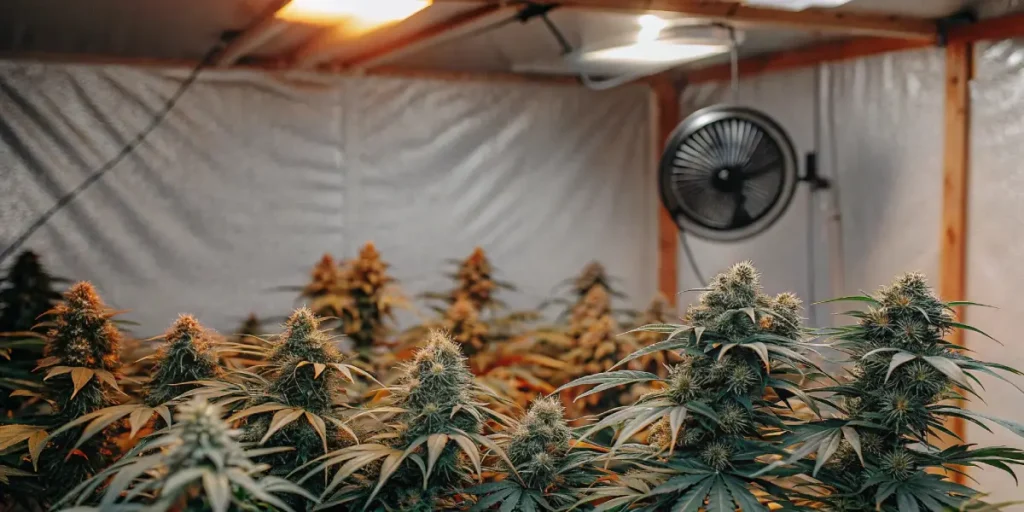
Is strawberry lemonade Worth Buying? Here’s What You Need to Know
The cannabis strain Strawberry Lemonade is named after the refreshing beverage it’s reminiscent of, and it promises to deliver a delightful experience for users. This strain is highly praised for its enticing aroma and flavor profile that combines sweet strawberries with a zesty lemon twist, making it particularly appealing to those who value taste as much as potency. The strain is often lauded for its ability to elevate mood and bring about a sense of euphoria, making it a popular choice for recreational users looking to enhance social activities or creative endeavors.
Aside from its flavorful appeal, Strawberry Lemonade boasts a robust potency with THC levels commonly reaching above 20%, ensuring a strong psychoactive experience for users. The effects are often described as uplifting and motivating, perfect for tackling chores or embarking on creative projects. Many users note a sense of clear-headedness and focus, which is unusual for such a potent strain. This balanced high makes it suitable for both day and evening use, allowing flexibility in how it can be incorporated into one’s daily routine.
From a growing perspective, the Strawberry Lemonade strain might require a bit more attention than some novice-friendly strains. It typically thrives in a warm, sunny climate and can be grown both indoors and outdoors. However, it’s essential to be mindful of its mold and pest susceptibility, ensuring that appropriate preventative measures are in place. Cultivators who successfully manage these factors can expect a bountiful yield of vibrant buds, contributing to the strain’s appeal among home growers.
Overall, Strawberry Lemonade is worth considering for those seeking a strain offering a unique flavor, strong effects, and the potential for a rewarding growing experience. While it may present a challenge to newer cultivators, the end result is often a high-quality product that justifies the effort. Whether used recreationally or cultivationally, the Strawberry Lemonade strain has proven itself to be a worthwhile investment for many in the cannabis community.
FAQs
What are the main ingredients in strawberry lemonade?
Strawberry lemonade primarily consists of fresh strawberries, lemon juice, sugar or sweetener, and water. The strawberries provide natural sweetness and color, while the lemon juice adds a refreshing tartness. Some variations might include additional ingredients such as mint leaves, club soda, or honey to alter the flavor profile or enhance the presentation.
How can I make strawberry lemonade at home?
Homemade strawberry lemonade is quite easy to prepare. Start by pureeing fresh strawberries in a blender, then strain the mixture to remove seeds. Mix the strawberry puree with freshly squeezed lemon juice and sweeten to taste with sugar or honey. Add water to reach the desired concentration, and serve over ice for a cool, refreshing beverage. Feel free to adjust ingredients based on your personal taste preferences.
Can I use frozen strawberries to make strawberry lemonade?
Yes, you can absolutely use frozen strawberries to make strawberry lemonade. If using frozen strawberries, allow them to thaw first for easier blending, or blend them directly if you prefer a thicker consistency. Frozen strawberries can be just as flavorful as fresh ones, especially if they’re picked at peak ripeness and flash-frozen. They can also be a convenient and cost-effective option during the off-season.
What are some creative variations of strawberry lemonade?
You can get creative by adding herbs like mint or basil for an aromatic twist. Swap some or all of the water with sparkling water or club soda for a fizzy version. Mixing it with a splash of lime juice can add another layer of citrus complexity. For a cocktail version, add a shot of vodka, rum, or tequila. There are countless ways to customize the flavors to suit your taste preferences or occasions.
Is strawberry lemonade healthy?
Strawberry lemonade can be a healthy beverage option when prepared with natural ingredients and minimal added sugar. Strawberries are rich in antioxidants and vitamin C, while lemons are a good source of vitamin C and have detoxifying properties. However, portion control is essential, as lemonades can be high in sugar. Consider using a natural sweetener like honey or stevia to reduce sugar content while maintaining sweetness.

